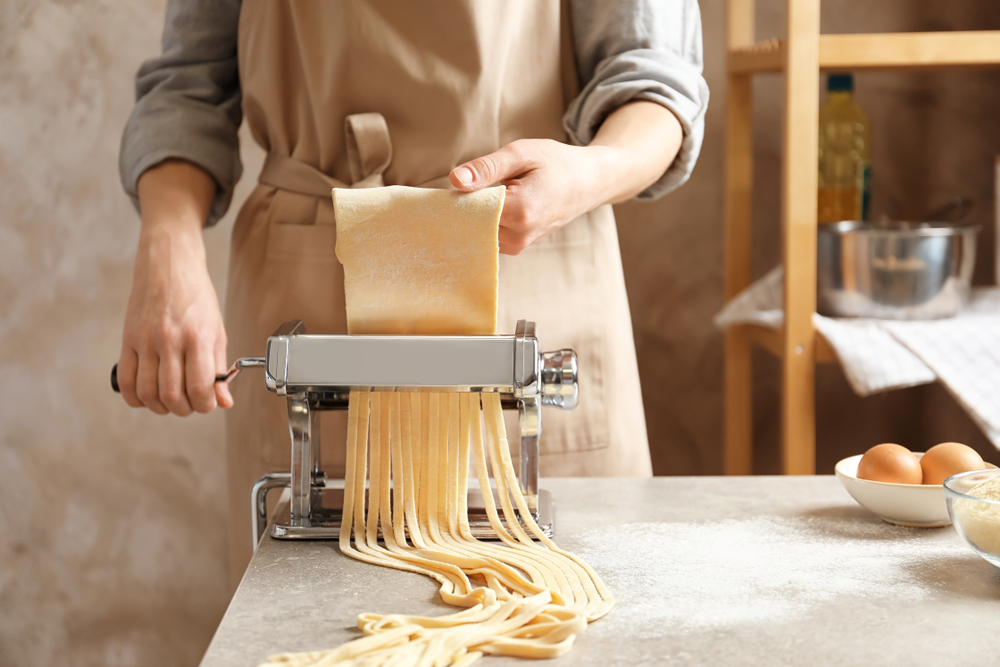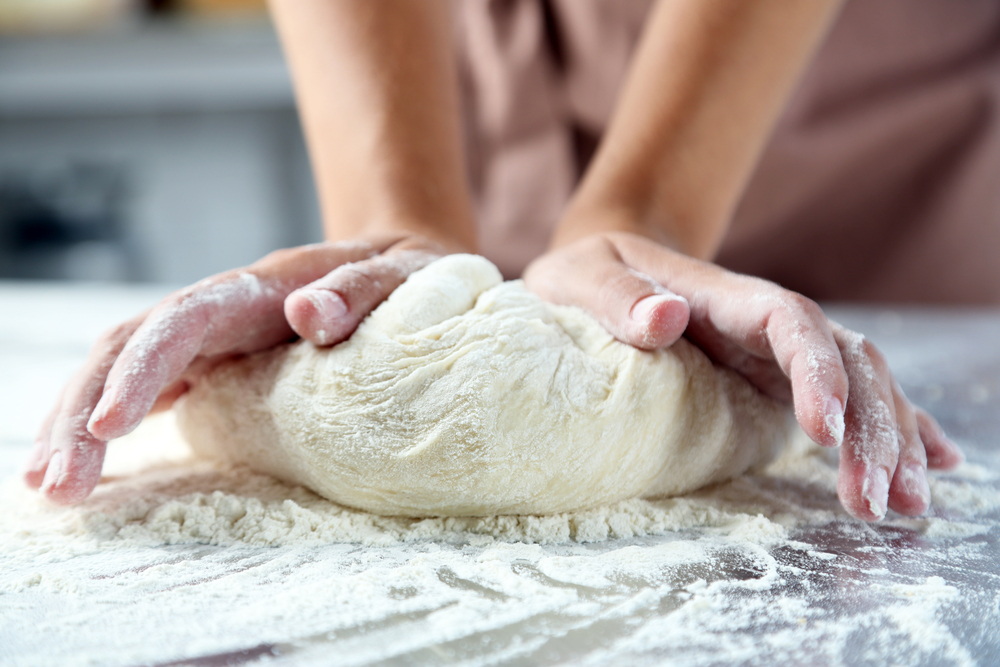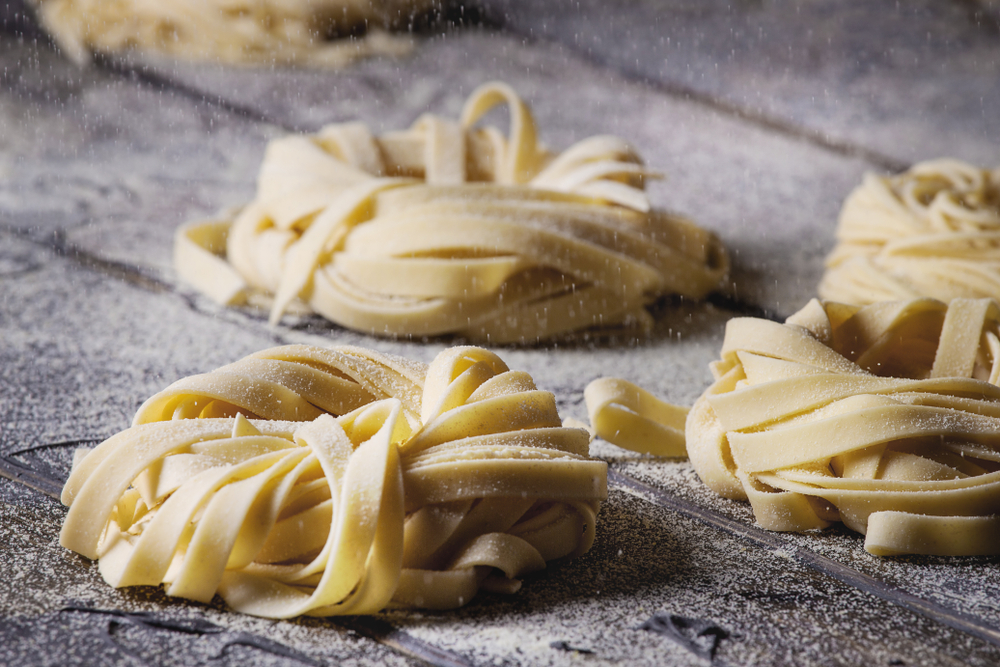People are often reluctant to make their own pasta, especially when it’s so easy to pop to the shops and buy some dried pasta, but making your own is actually a lot easier than you might think.
If you ask a selection of chefs, chances are that they’ll all give you a slightly different way of making pasta, some with water, some with oil and all with different kneading times, meaning it can all get pretty confusing.
That’s why we’ve put together this quick guide to making fresh pasta as a beginner, keeping things simple to allow you to grasp the basics before you can start to experiment a little bit more.
What You’ll Need
There are all kinds of specialist pasta-making equipment available out there, but the truth is that most of them are pretty unnecessary.
In fact, you can technically make your own pasta with little more than a rolling pin, but it’s far easier to get yourself a decent pasta machine to do the hard work for you (you’ll also need a covered baking tray and some cling film).
In terms of ingredients, while there are all kinds of things that can be added, the bare basics that you’ll need are flour and a source of hydration (whether this is water or eggs).
While there are many different types of flour you can use such as high-protein and semolina, normal all-purpose flour will do just fine.
There are different views on exactly which is best, so you’ll have to do some experimenting, but a combination of whole eggs with some additional egg yolks.
Again, this is all going to take a bit of trial and error to find the perfect dough for you, but a good starting ratio is about one whole egg and two yolks to every 150g of flour.
It’s also probably a good idea to throw some salt into your dough mixture for some extra flavour (you can also salt the water that you cook your pasta in later).
Mixing/Kneading
Once you’ve got all of your ingredients and equipment, it’s time to mix it all together. Ideally, you’ll have a food processor to do this, although you can also do this by hand if you wish.
All you need to do is weigh out the flour and place it onto your workspace in a pile and create a hole in the middle (known as a well), before whisking your eggs and adding them to the mixture (as well as any salt or oil you’re using).
Using a fork (or just your hands!) you need to slowly start to push the flour into the egg mixture, gradually adding more flour until you have a single mass of wet and sticky dough that holds together.
Next, it’s time to get stuck in and knead the dough. Simple push the heel of your hand into your pile of dough and push it forward, before, turning it 45 degrees, until it starts to feel firm and dry and can be formed into a ball shape (keep adding flour if it feels wet, or water if it’s too dry).
Kneading can be hard work, but if you don’t do it properly you’ll wind up with a very flat dough. Around ten minutes should be enough time, but you can’t really ‘over-knead’ dough.
Resting
You should have a nice, springy ball of dough at this point, which now needs to be left to rest.
This allows the flour to hydrate a bit more and lose some of its elasticity. Again, there are varying schools of thought on how long you should rest the dough for at this point, but an hour and upwards should be fine.
Rolling/Cutting
The final step before cooking, you’ll first need to roll out the dough with a rolling pin until it’s about half an inch thick, keeping it as even as possible.
Next, it’s time to put the pasta maker to use. Of course, these all be slightly different, but you’ll want to start off using the widest possible settings.
Slowly feed the dough through the machine, supporting it with your hand as it comes through the other side and repeating until it passes through smoothly.
Then, keep turning the setting thinner and repeating the process until you end up with the desired thickness.
Finally, we need to cut the pasta into the desired shape. Your pasta machine will probably have a few settings to cut the dough into simple tagliatelle or noodle shapes, although you can do this yourself if you want, using either a sharp knife or pizza cutter.
Cooking
The very final part before you get to enjoy your fresh pasta, cooking fresh pasta is a very quick process.
Once you’ve brought your salted water to the boil, throw your pasta in for around one to two minutes and drain before serving.
So that’s all there is to it! Of course, there are plenty of other ingredients you can try and many different shapes too, but once you’ve mastered these basics, you should be fairly well prepared to start experiments a bit more!
At Bella Cosa, all of our pasta dishes contain fresh pasta, handmade in our kitchen. Book a table to taste the difference today!






